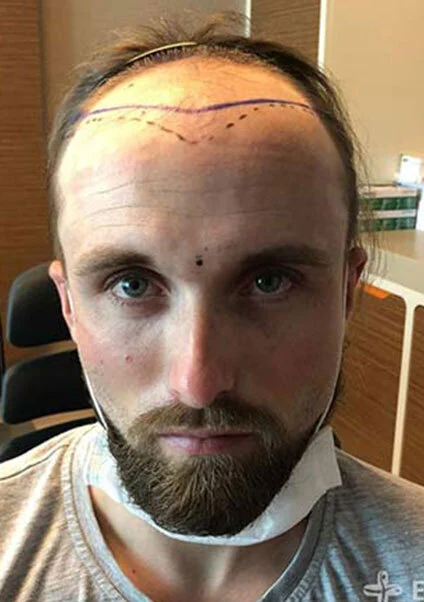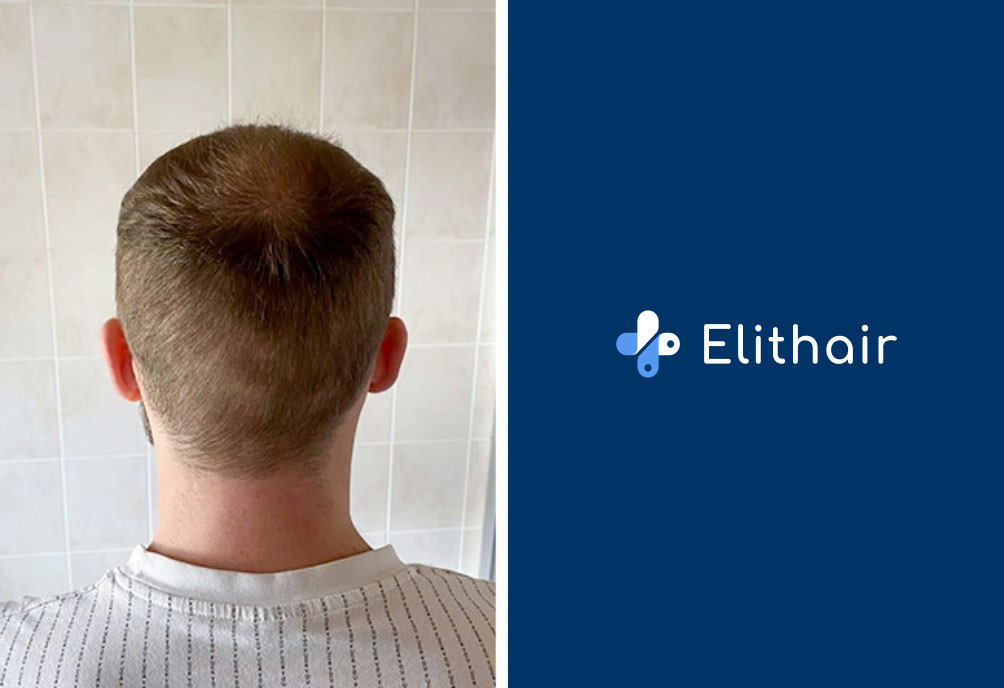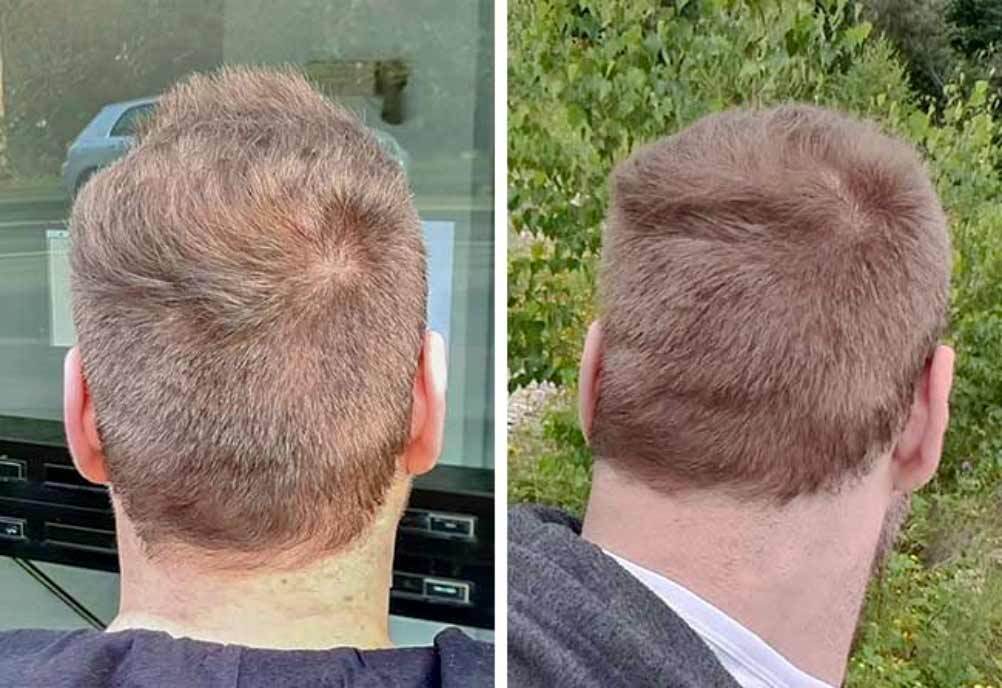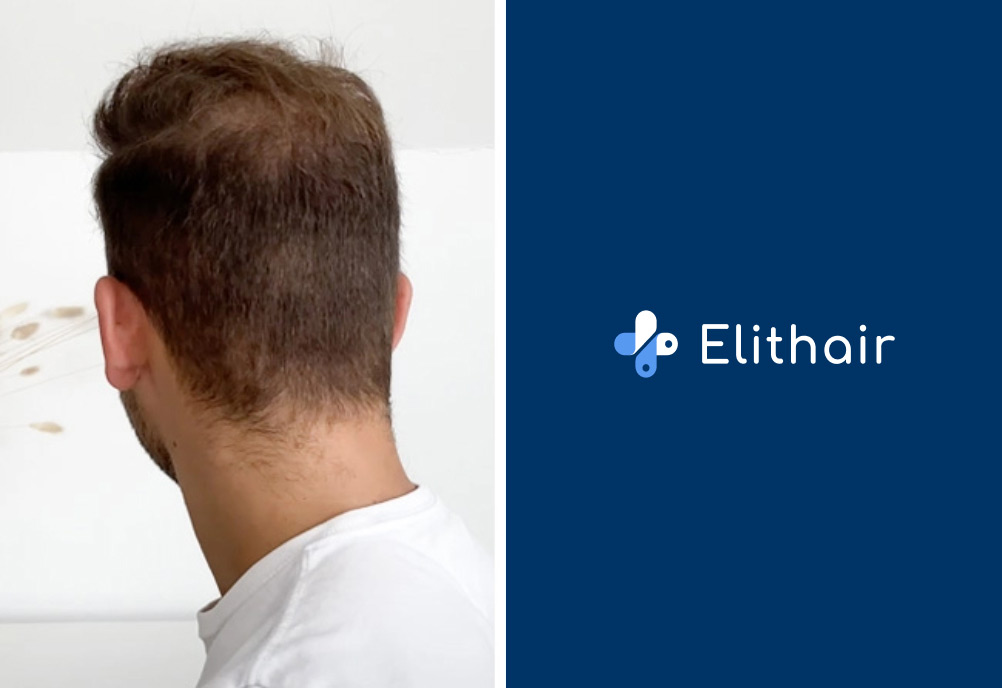How Does a Hair Transplant Work?
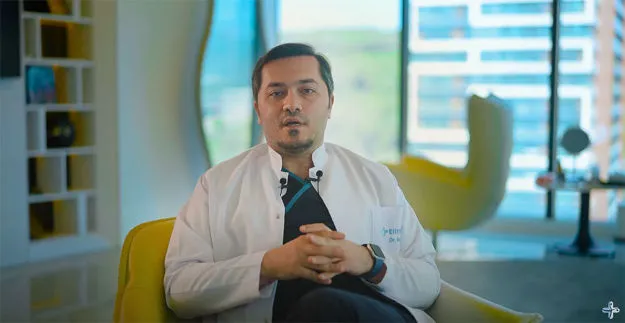

Embarking on your hair transformation journey with Elithair starts with the exclusive NEO FUE Set, arriving at your door before your procedure.
The new preparation technique, devised by Dr. Balwi, includes two potent serums and a derma roller, which strengthen your grafts in advance and prepare them perfectly for treatment.
The serum is applied both 7 days and 1 day before your hair transplantation, in both the donor and recipient areas. These infuse essential nutrients, resulting in a higher hair growth rate of up to 98% after your surgery.
Harvesting the Grafts
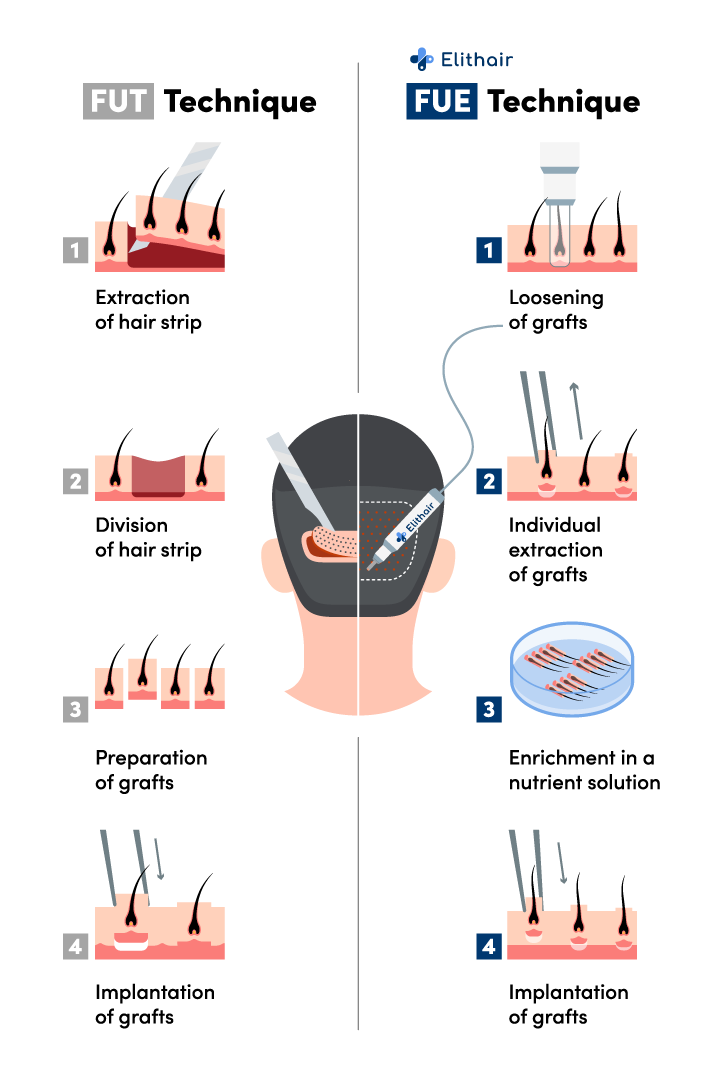
In the world of hair transplantation, two key methods stand out: Follicular Unit Extraction (FUE) and Follicular Unit Transplantation (FUT).
FUE involves delicately extracting individual hair follicles from the donor area using a hollow needle equipped with a small motor, with a diameter of less than one millimeter (0.8-0.9 mm). This method leaves behind tiny circular marks that are barely noticeable.
FUT, on the other hand, removes a strip of scalp skin, dissected into individual follicular units for transplanting. FUT leaves a visible linear scar. The FUT method results in a linear scar that can be concealed by surrounding hair but remains visible throughout one’s lifetime.
The advantages of FUE include minimal scarring, absence of stitches, shorter healing time, and the ability to extract hair from various parts of the body. In contrast, FUT results in a noticeable scar, longer recovery time, a higher risk of nerve damage, and a limited donor area.
Elithair exclusively utilizes the modern FUE method for graft extraction – it’s modern, leaves minimal scars, and ensures a smoother transformation.
Hair Follicle Implantation
Choosing the perfect method for graft placement in your hair transplantation depends on many factors. Therefore, expert guidance beforehand is crucial.
At Elithair, our team will walk you through the treatments best suited for your hair loss situation and explain why they’re the right fit.
Who Is a Good Candidate for a Hair Transplant?
Men and women who are affected by hair loss are suitable candidates for a hair transplant. For men, the common culprit is androgenetic alopecia, tied to genetics and male hormones. This also affects women, though in distinct patterns.
To qualify, a healthy scalp is crucial. A sufficient supply of healthy hair in the donor area is required, and the recipient area should be free from hindrances like scars or skin issues that hinder hair growth. Most patients seeking to regain their hair through a hair transplant are suitable for the minimally invasive procedure. However, exceptions exist based on individual circumstances.
Competent and thorough scalp examinations are key to determining suitability. To ensure that you are a good candidate, at Elithair, we use the exclusive Pre-Test System, consisting of 6 detailed analyses conducted before your hair transplant.
Free AnalysisRisks and Side Effects of a Hair Surgery
Hair transplantation is generally a safe and minimally invasive procedure that carries rare risks and side effects that patients should be aware of. One significant concern is scarring, which patients often worry about. However, with the modern FUE method (Follicular Unit Extraction), wounds heal quickly and leave virtually no scars.
Another potential side effect is bleeding. A slight reddish fluid flowing into the donor area on the first day after the procedure on day one post-procedure is expected. This fluid consists of only 2% blood, while the rest is the saline solution from transplantation.
During the hair transplantation process, small red dots may appear on the scalp, caused by the grafts being inserted into the open channels in the recipient area. These dots usually disappear within a few weeks after the transplantation. It’s important to note that these small dots should never hurt more than a scratch. However, if signs of infection occur, such as increased pain, redness, or discharge, it’s important to seek medical attention immediately.
Post-transplant, there might be a mild tightness in the scalp – nothing overwhelming. Most patients report very little pain that can be effectively treated with pain relievers. Discomfort diminishes within a few days, allowing you to resume your regular activities faster than you would expect.
Is the Procedure Painful?
Hair transplantation can spark anxiety in some due to concerns about pain. Fortunately, modern techniques offer relief, ensuring patients’ comfort. Elithair offers an exclusive sedation method specifically developed for patients who fear anesthesia: the Sleep-Deep method.
In this procedure, you are first administered the anesthetic Propofol, which puts you in a 15-minute deep sleep. During this, a local anesthetic is administered, a sensation you won’t perceive while asleep.
When you wake up, hair transplantation can commence with 0% pain. This innovation has left our patients delighted, and you too can revel in its benefits – exclusively at Elithair.
How Long Is the Recovery Time?
Your hair transplant journey is designed for a swift recovery, allowing you to recover quickly and enjoy natural, full hair. In mere days post-procedure, incisions start to mend, forming protective crusts. Any temporary redness fades quickly as part of the natural course.
With attentive aftercare, healing concludes by day 12. The transplanted area merges seamlessly with your original hair. Expert guidance and the Elithair app support you throughout this process, ensuring a smooth path to revitalised hair.
Post Hair Surgery Care – Elithair’s Advices
What should you avoid during the first days?
Direct exposure to the sun
Sauna & Solarium
Physical activity
Swimming
Alcohol
Styling products
Smoking
After a hair transplant, it’s important to be cautious for successful healing and great results. In the initial days, avoid heavy activities to prevent sweating and high blood pressure that might harm the grafts. It’s advisable to take it easy during the initial days after the procedure.
Another crucial aspect is to protect yourself from direct sunlight. The treated areas are more sensitive during the healing phase, and sun-exposed skin can lead to irritation and damage.
To provide you and your scalp with the best possible support during the healing process, you’ll receive care and aftercare tips from our doctors and the Elithair app. The app provides you with numerous tips and reminders through push notifications directly to your smartphone, and our experts can evaluate your results by analyzing the images you upload. Your well-being really matters to us.
What Are the Costs for a Hair Transplant?
The costs for hair transplantation depend, as illustrated in the graphic, on several factors. Turkey is particularly popular and affordable as a destination for hair transplantations.
An exact calculation of the breakdown of your individual price will be provided during a non-binding consultation with your personal expert at Elithair. Please do not hesitate to contact us for further information and to schedule an appointment.
To the Price PageAchieve a Full Head of Hair With a Reputable Hair Loss Clinic

Hair transplantation is a minimally invasive, safe, and effective method to combat hair loss. Thanks to modern techniques, the treatment is completely painless, leaves barely visible scars, and yields impressive results with high hair density.
Prior to proceeding, a thorough understanding is key. Selecting a skilled specialist and a reputable clinic is vital. This choice marks the initial stride towards achieving brilliantly full hair.
Queries? Don’t hesitate. Benefit from the expertise of the industry leader, Elithair. Our experts await to guide you in a non-binding consultation, offering their expertise at your convenience.
Contact Us
FAQ
Is a Head Covering Necessary Post-Hair Transplantation?
In most cases, doctors recommend wearing a head covering for a certain period after the hair transplantation. This cover acts as a safeguard, shielding treated areas from elements like sunlight, dust, and dirt. Moreover, it minimizes friction, aiding the healing of transplanted hair further.
Following your doctor’s guidance and adhering to the advised period for the head covering is vital. This step ensures successful recovery and supports the finest results of your hair transplantation.
What is the History of Hair Transplantation?
- 1500 BC: First mention of hair restoration in the Ebers Papyrus of ancient Egypt.
- 1897: Dr. Menahem Hodara conducts the first hair transplantation attempt in Turkey.
- 1923-1943: Okuda, Sasagawa, and other Japanese dermatologists experiment with hair transplantation.
- 1959: In the USA, Dr. Orentreich performs the first hair transplantation using the punch technique.
- 1975: Dermatologist and hair transplant surgeon Dr. O’Tar T. Norwood updates the Hamilton Scale to classify stages of male pattern baldness.
- 1977: Dr. E. Ludwig introduces the Ludwig Scale, a method to classify female hair loss.
- 1988: Dr. Bobby Limmer invents the FUT technique (Follicular Unit Transplantation), a hair transplantation using the strip harvesting method.
- 1995-2002: Development of the FUE technique by Dr. Ray Woods, Dr. Bernstein, Dr. Rassman, and Dr. Masumi Inaba.
- 1999: Introduction of the Choi Implanter Pen and the DHI technique.
- 2007: Dr. Bernstein and Dr. Rassman present robotic hair transplantation at the ISHRS conference.
What Are the Latest Developments in Hair Transplantation-Tech?
Hair transplantation has made remarkable progress in recent years, especially through the introduction of robot-assisted procedures and the use of stem cells. Robot-assisted procedures involve precise extraction and transplantation of individual hair follicles, yielding results that look entirely natural. However, robot procedures lack the human touch required to ensure optimal hair growth direction and aesthetic harmony, making manual hair transplantations performed by experienced surgeons potentially way more advantageous.
Another exciting avenue is hair transplantation with stem cells. This involves collecting adult stem cells from the patient’s body and transplanting them into the areas with hair loss. These stem cells stimulate the regeneration and fortification of hair follicles, resulting in denser and stronger hair growth. They also accelerate healing and lower infection risks. Although stem cell-based transplantation is relatively new, more research is needed to ensure its long-term effectiveness and safety.
While robot-assisted and stem cell-based methods show great potential, manual hair transplantation still holds sway. Seasoned surgeons can personalize the procedure to match specific needs and aesthetic preferences. They factor in aspects like hair growth direction, a natural hairline, and overall aesthetic harmony for optimal results. Manual transplantation ensures a hands-on approach, guaranteeing the procedure’s quality.
What Are the Success Rates of Hair Transplantations?
Hair transplantations are the only permanent solution for hereditary baldness. Success rates are crucial to evaluate when deciding about this surgical procedure for hair restoration. With the advancement of technology and techniques, the success rates of hair transplantations have significantly improved over the years.
On average, the success rate of hair transplantation ranges between 80 and 90%. It’s important to note that these rates hinge on multiple factors, including the patient’s unique circumstances and the surgeon’s expertise.
With modern methods like the exclusive NEO FUE increased hair growth of up to 98% can be achieved. Benefit from this innovation from the market leader by undergoing a complimentary hair analysis and counsel from our adept professionals.
By choosing a reputable clinic and an experienced surgeon, you can enhance your chances of successful hair transplantation. This promises enduring, natural-looking hair, nurturing amplified self-confidence.
What Are the Emotional and Psychological Benefits of Hair Transplantation?
Hair transplantation transcends physical restoration; it gives remarkable emotional and psychological benefits to individuals. Hair loss can deeply impact self-esteem, confidence, and overall mental well-being.
According to a study conducted at Indiana University School of Medicine in Indianapolis, androgenetic alopecia represents a significant psychosocial stress factor in the lives of those affected, denting their quality of life in multiple ways.
Therefore, hair transplantations offer the opportunity to not only restore the appearance of full hair but also reimagine confidence and self-image.
By restoring a natural hairline and fuller hair, individuals often experience a boost in self-confidence, leading to improved social interactions, heightened self-worth, and a greater sense of attractiveness. This ripple of positive change can have far-reaching effects on various aspects of life, including personal relationships, career opportunities, and overall quality of life.
With the ability to permanently address hair loss, hair transplantation provides individuals with a renewed sense of identity, enabling them to approach life with renewed enthusiasm and confidence.
